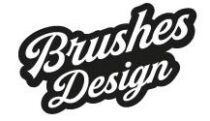This post is also available in: Español (Spanish) Português (Portuguese (Brazil))
Picture this: you’ve got a flawless portfolio, stunning designs that turn heads, yet the clients aren’t rolling in as you’d hoped. You’ve probably asked yourself a thousand times what’s missing. Well, let me give you a hint: the words you use to sell your work matter almost as much as your designs. In this article, I’m going to show you how to use copywriting strategies for freelance designers to turn your words into client magnets.
We’ll go through how to write messages that hook, persuade, and help you land more projects.
What is copywriting and why should it matter to you as a freelance designer?
Before we dive into techniques, let’s get the basics straight. Copywriting is the art of writing to sell. Simple as that. It’s not just about “writing nicely,” but about using the right words to make your potential client think: “This is the designer I need.”
As a freelancer, you probably have to sell yourself: social media, your website, quotes, presentations… That’s where copywriting steps in. It’s your silent salesperson, working 24/7 for you.
Real benefits of copywriting for freelance designers
Connect with your audience: The right words make people feel like you’re speaking directly to them.
Stand out from the competition: There are plenty of designers out there, but few communicate their value well.
Boost your conversions: Clear and engaging messages bring you closer to hearing a “yes” from clients.
Copywriting strategies for freelance designers that really work
1. Focus on benefits, not features
Instead of listing what you do (“I design logos, websites, brochures”), explain how your work helps your clients. For example: “I create logos that make your brand unforgettable.”
Clients don’t just want a design—they want results. Show them you understand their needs.
2. Use clear, simple language
Avoid complicated jargon. Write as if you were chatting with a friend over coffee. Clear language builds trust and makes it easy for potential clients to understand the value you offer.
3. Tell stories
People love stories. Share quick stories about how you helped a past client succeed, or how you solved a tricky design challenge. It makes you relatable and builds emotional connection.
4. Add social proof
Testimonials, reviews, and portfolio highlights are powerful. Sprinkle them naturally throughout your website and proposals to show you’re trusted by others.
5. Create strong calls to action (CTAs)
Don’t leave your readers wondering what to do next. Use clear CTAs like: “Book your free consultation today” or “See my portfolio.” Guide them step by step.
Common copywriting mistakes to avoid
Sounding too robotic
If your writing feels cold or overly formal, people will switch off. Aim for a natural, friendly tone.
Talking only about yourself
While it’s tempting to focus on your skills and achievements, always bring it back to what your client needs. Make them the hero of the story.
Being too vague
Avoid general statements like “high-quality designs.” Be specific! Try: “Crisp, modern logo designs that capture your brand’s personality.”
How to apply these strategies across your platforms
On your website
Your homepage and service pages should clearly explain how you help clients. Use benefit-driven headlines and client testimonials to build trust.
On social media
Keep it short and punchy. Use captions that grab attention and encourage interaction. Don’t just post your work—explain the story behind it.
In proposals and emails
Personalise your messages. Show potential clients that you’ve taken the time to understand their needs and explain how you can help them specifically.
Quick-start checklist for your next copy
✅ Focus on the client’s needs and benefits
✅ Keep language simple and friendly
✅ Use social proof (testimonials, portfolio links)
✅ Add clear calls to action
✅ Tell short, relevant stories
Final thoughts
Good design speaks for itself, but great copy makes sure it gets heard. As a freelance designer, combining your creative skills with sharp copywriting gives you a powerful edge. Start small: tweak your website copy, rewrite your next Instagram caption, or update your proposals. You’ll be surprised at how much impact the right words can have.
And remember: your designs draw people in, but your words close the deal.
Also you can hear another point of view from Brandon Timothy in their YouTube channel
